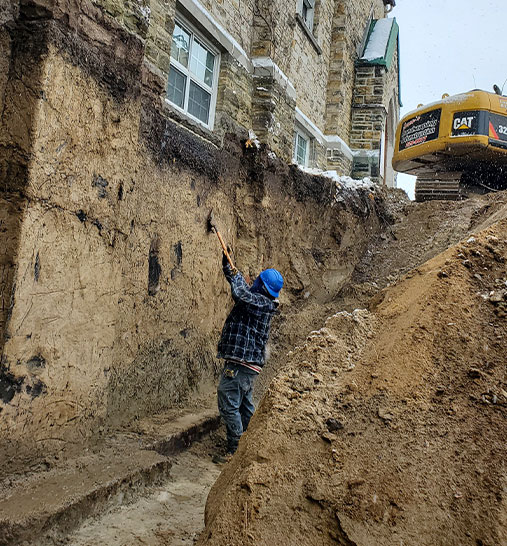Should your home has a settling foundation, fixing the challenge as soon as possible is vital. The foundation repair method that your own home needs depends on several existing conditions, like the symptoms that your residence is experiencing, the composition and compaction with the soil below your house, the length of time down stable the weather is located along with the type of foundation wanting support.

Most kinds of foundation repair don’t qualify as DIY projects and need the ability and tools of an trained professional. However, understanding the situation and learning the possibilities are valuable tools when hiring a contractor or foundation repair expert.
Identifying Foundation Problems
Foundation problems often show themselves in subtle ways at first. Possibly small cracks from the basement walls or water intrusion after heavy rainfall. Often, those minor issues aren’t anything over annoyances and aren’t indications of an important issue. However, just as often, they’re warning signs of bigger problems into the future otherwise handled immediately. When you notice small signals honestly, have a very professional have a look to assess your situation.
In case you begin to find doors in your house that no longer open or close easily, windows which might be challenging to operate, gaps developing in trim work or cracks in the drywall, immediate attention is necessary to and repair what might be a serious foundation problem.
Permanent Foundation Repairs
There are several methods to reestablish support on your home’s foundation. The best option is dependent upon the soil composition beneath the house and the that has to have repair.
Steel Piers
Most of the time, installing steel piers beneath your residence is the best long-term treatment for stabilize the foundation-It’s also the most expensive. With this repair, galvanized steel posts are forced deep to the ground beneath the foundation. The piers can go as deep as essential to reach bedrock or soil that’s compact enough to provide enough support.
Steel piers can hold massive levels of weight, are employed in just about any upper soil condition and are considered an enduring repair.
Helical Piers
Helical piers are another permanent foundation repair method made from galvanized steel. Essentially, these are steel posts that twist to the ground having a helically-shaped leading point that resembles a screw or auger and pull the pier deeper below the surface when turned by large machinery.
Helical piers are fantastic for supporting the larger weight of an home and foundation without needing to reach bedrock. The devices are drilled into the ground until they reach heavy soil compact enough to compliment the load before being permanently coupled to the house.
Concrete Piles
Concrete piles are merely blocks or cylinders of pre-cured concrete. They can be several inches long and wide or many feet thick and long. The piles are determined or placed underneath the foundation into compacted soil and may consist of one piece or several stacked together with the other person.
Concrete piles are a lower-cost substitute for steel piers. However, the soil through your home determines if they’re an acceptable treatment for your foundation.
Poured Concrete Piers
Poured concrete piers are another lower-cost foundation repair solution if your conditions are right beneath your home. The technique includes digging a sizable hole beneath the foundation, filling it with wet concrete and allowing it to cure before attaching it on the home.
Poured concrete piers are of help in lots of soil conditions and may even resemble simple cylinders or be created with a bell shape towards the bottom to supply increased support.
Minor Foundation Adjustments
Sometimes your property may experience foundation problems that aren’t severe enough to warrant a heavy-duty repair but nonetheless must be handled to avoid bigger issues.
Slab Jacking
Should your home rests on the concrete slab that has been unlevel or that shows cracks from soil erosion, slab jacking may solve the problem. Slab jacking involves drilling holes in the existing slab and injecting a concrete slurry or dense polyurethane foam underneath the failing section.
Slab jacking is a kind of fix for sagging sidewalks, driveways and garage floors. In case your home’s slab foundation rests on sufficiently compacted soil, slab jacking will offer an enduring strategy to sagging.
However, slab jacking isn’t a heavy-duty repair method. An entire repair may involve many application as soil is constantly erode or settle.
Shimming
New homes are sometimes built on ground that won’t happen to be sufficiently compacted before their foundations were constructed. Following the property is complete, that soil can shift or erode, causing gaps between the foundation and the other home’s structure. The condition might be indicative of more significant problems.
After a check mark from the situation, your foundation expert or structural engineer may decide that filling the gap with steel shims is adequate for reestablishing proper support. Shims can work being a permanent solution if your soil stops settling below the home. However, if gaps reappear, a much more invasive repair likely has to happen.
For details about EC Foundations browse the best web portal
